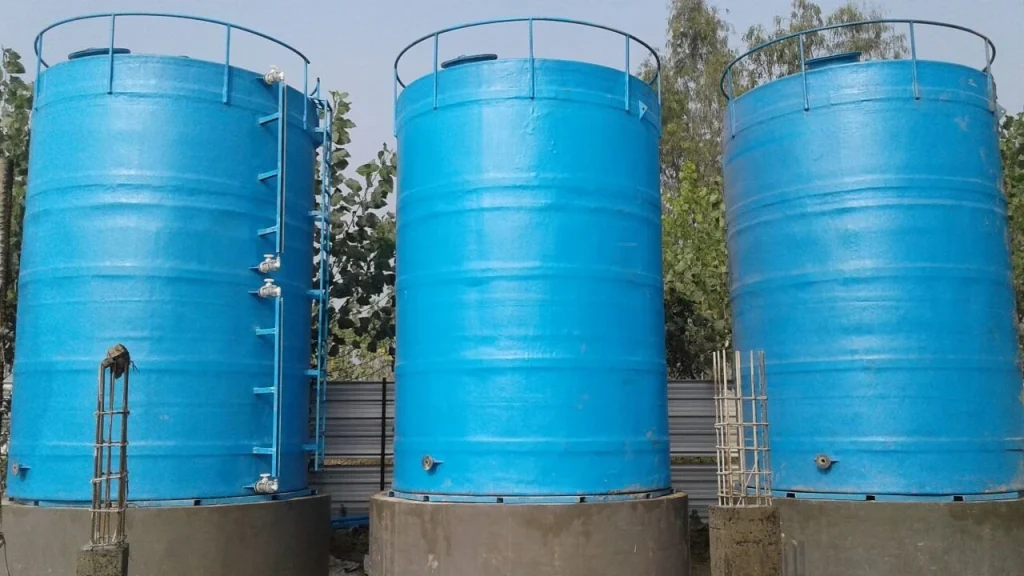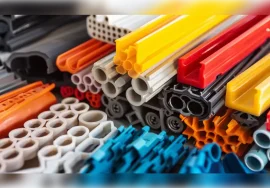
FRP Tanks vs Metal and Concrete Tanks: Why More Industries are making the Change?
In the case of liquid storage, be it water treatment, chemicals, effluent, fish farming or manufacturing, the type of tank you choose will either influence the level of safety, maintenance cost, downtime and reliability in the long run.
Industries have been using metal and concrete tanks over the years. The reason was that they were the only familiar alternatives hence, they were the standard. Their difficulties have now grown difficult to avoid:
- Metal rusts
- Liquids absorbed by and cracks concrete.
- They both require regular maintenance.
- They are both cumbersome, slow to install, and cumbersome.
This is precisely what makes the Fibre Reinforced Plastic (FRP) tanks to be replacing them. Companies require sustained performance–and FRP provides the same with ease.
The Advantage of FRP Tanks.

FRP tanks are manufactured out of fiberglass mixed with corrosion resistant resin. This gives them:
- Strongness as steel.
- Lightweight construction
- Total resistance to corrosion.
That implies that industries do not need to repaint, repair or replace tanks after every so often. FRP tanks offer a low-maintenance solution that is long-term.
FRP versus Metal versus Concrete: A Practical Comparison.

| Function | FRP Tanks | Metal Tanks | Concrete Tanks |
| Corrosion Resistance | Excellent | Very Poor | Moderate |
| Weight | Very Light | Heavy | Extremely Heavy |
| Lifespan | 20+ Years | 5–10 Years (with coating) | 10–15 Years |
| Maintenance | Very Low | High | Medium to High |
| Installation Time | Fast & Flexible | Moderate | Slow (civil work required) |
| Suitability for Chemicals | Highly Suitable | Poor | Possibility of leakage/reaction |
In simpler words:
When you are dealing with water, moisture or even chemicals, FRP tanks beat metal and concrete in all the instances.
Key Benefits of FRP Tanks
- No Rust, Rot, or Decay
FRP tanks stay unaffected by:
- Humidity
- Salt-laden air
- Chlorine
- Acids and alkalis
Where metal tanks have failed, FRP still works.
- Lightweight and Easy to Move
FRP tanks are perfect in remote locations, sloping grounds, and rooftops, and in the sea.
No cranes needed
No strengthened floors needed.
Deterministic and quick installation.
- Custom Sizes and Shapes
FRP has one hundred percent design flexibility. Tanks can be:
Circular, square, vertical, horizontal, or modular.
Designed to the storage capacity, space, and chemical compatibility.
Instead, metal and concrete tanks are limited in the shape and size.
- Lower Lifetime Cost
A metal tank might be more cost effective in the short run, but over time, the cost of repainting, coats and replacing the tank is costly. FRP tanks require:
- Minimal maintenance
- No internal coating
- Long operational life
This only amounts to a significantly lesser cost in the long run.
Typical uses of FRP Tanks.

FRP tanks are widely used in:
- Water desalination and treatment facilities.
- Pharmaceutical and chemical factories.
- Industries of textile and dyeing.
- Food processing units
- Aquaculture and fisheries
- Hotels, resorts and municipality systems.
- Agriculture and irrigation
FRP is the material of choice whenever there is a need to have reliable liquid storage.
Selecting the FRP Tank Manufacturer.
Performance depends on:
- Resin quality
- Fiber density
- Laminate thickness
- Curing and testing process
Choose a manufacturer who:
- Knows the conditions in your industry.
- Utilizes certified resins and fibers.
- Provides custom designing.
- Performs leakage, pressure and structural tests.
A cheap FRP tank is not durable, but one that is well-manufactured will be much more effective than all the others.
Discussion: Future Proof Your Storage.

Industries cannot afford to take the risk of leaks, corrosion and downtime. FRP tanks are the most safe, resistant and cost effective.
FRP provides you, in case of renovating or establishing a new plant, with:
- Long service life
- Corrosion resistance
- Faster installation
- Lower total ownership cost
Change once–and profit decades.

